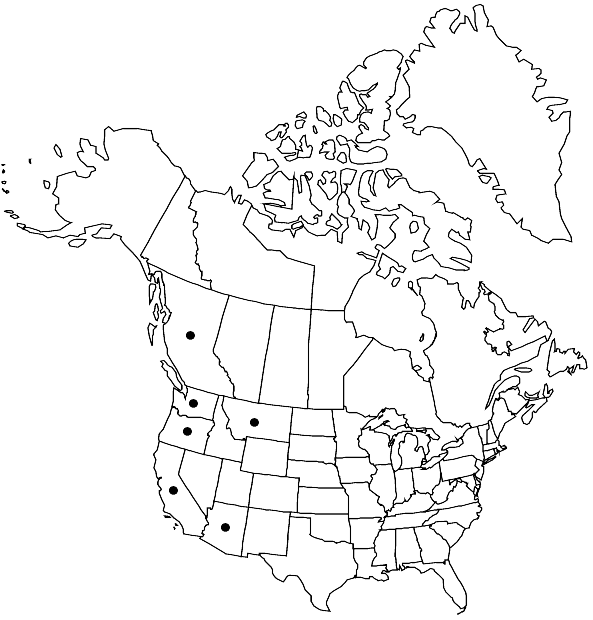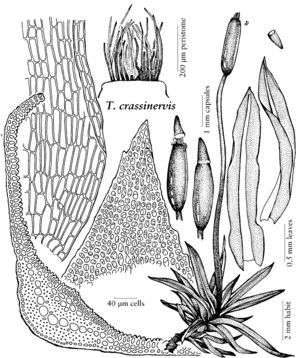Timmiella crassinervis
Leafl. W. Bot. 6: 11. 1950,.
Stems commonly unbranched. Leaf base distinctly and rather abruptly wider than the limb. Sexual condition dioicous. Seta 0.8–1.2 cm. Capsule with theca usually 2–2.8 mm, operculum 0.6–1 mm, peristome not or slightly twisted.
Phenology: Sporophytes mature spring–summer.
Habitat: Soil, clay, roadside banks
Elevation: low to moderate elevations (150-1500 m)
Distribution

B.C., Ariz., Calif., Mont., Oreg., Wash., Pacific Islands (Hawaii).
Discussion
Timmiella crassinervis is very similar to the European T. flexiseta (Bruch) Limpricht, and commonly matches the key traits (stems to ca. 1 cm, leaf margins dentate only near apex, peristome teeth short-filiform, erect) of T. diminuta (Müller Hal.) P. C. Chen of Asia as given by Li X. J. et al. (2001). Revision may result in synonymy. Sterile plants of the two species of the flora are not easily distinguishable even by the leaf base characteristics; see discussions by R. H. Zander (1994b) and D. H. Norris and J. R. Shevock (2004). Although several authors indicate that T. crassinervis differs from T. anomala by a peristome that is straight while that of the latter is twisted at least once, E. Lawton (1971) described the peristome as “slightly twisted” and distinguished T. crassinervis by its smaller size, unbranched stem, and dioicous condition. According to Norris and Shevock, in California where the two species co-occur, T. crassinervis is more common in the humid northwest of the state.
Selected References
None.
